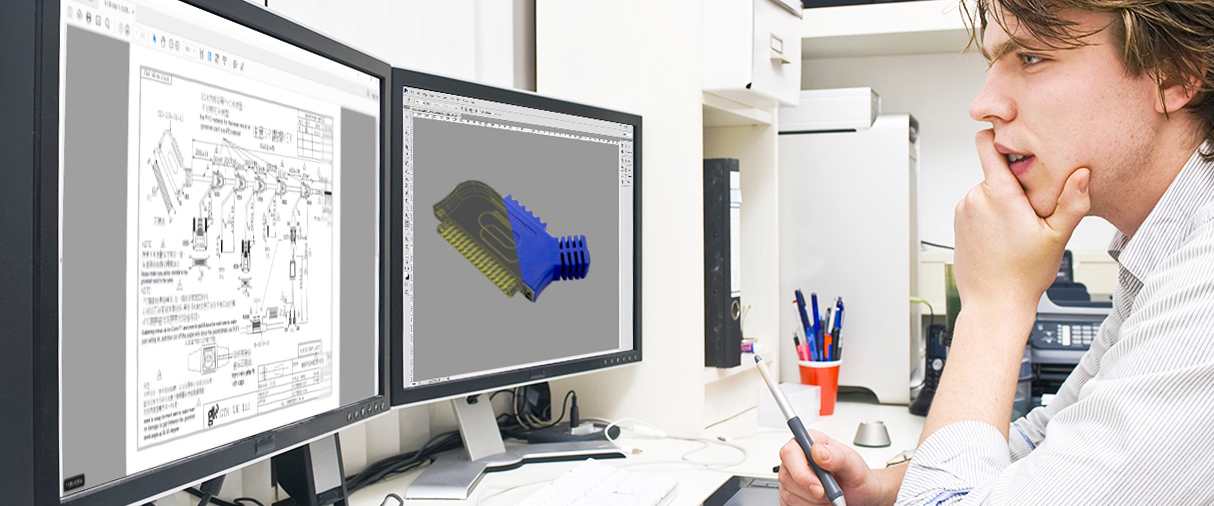The five elements of cable assembly design
November 8, 2017 / Blog , Cable Assemblies
When it comes to cable assemblies, it’s rare to find a ‘one-size-fits-all’ solution.
Instead, most manufacturers need an assembly to fit a very specific device or application – and as such, they require a degree of customisation.
At GTK, we have extensive experience of designing, manufacturing and supplying custom cable assemblies; where appropriate, we can even take pre-existing customer designs and improve on them to deliver cost-savings. In order for us to create an effective assembly that cuts down on cost and improves efficiency, our design process follows five key steps.

Understanding these steps helps you appreciate the considered approach we take to each and every cable assembly.
Specification is the first element we consider. We develop a close working relationship with our customers so that we understand their business requirements, cost expectation and (most importantly) any specific standards that must be met. At this stage, the client usually provides their own specifications for an assembly, but it is vital to avoid over-specifying. GTK have a range of standard materials, such as heatshrink, cable ties, labels and other such "consumable" material. By offering these rather than named manufacturers, we can keep the excess stock costs and MOQs on projects low.
Post-specification recommendations will take place once we have received the specification for the assembly. This is a stage where we will offer our own recommendations that may differ from the initial design. It is important that clients do not over-specify down to material components where this is not necessary, as this can slow a project down and increase cost. Instead, GTK can source components that meet end-use requirements without additional costs.
Design for Manufacture is the process of designing a product such that it can be manufactured to a consistently repeatable high quality and still be cost-effective.
When clients provide us with their drawings or specifications, we can review them with DFM in mind and may recommend changes that will make the cable assembly easier or more cost effective to manufacture, whilst still meeting the required specification. For example, we may create a loom board for a complex build to aid inspection and save on having to measure each cable branch individually.
Whatever application your final product will have, our cable assembly will be built for purpose thanks to this comprehensive specification and design stage.
Prototyping is perhaps the most vital stage – where the client’s cable assembly is produced and sent to them for testing. The customer can check if the assembly is the correct length and fits the equipment it is designed for, which can prevent running a full production of cable assemblies that are not fit for purpose. At GTK, we offer a FastTrack prototyping service that typically delivers working prototypes in just five days. Our cable assemblies can be tested in-situ less than one week from first specification.
Packaging is the final element of our design process – something most clients do not consider but one that shouldn’t be overlooked. Cable assemblies may be delivered as single elements to be used on a production line, or they may be packaged with your end-product. Your packaging requirements tend to have an impact on final cost, so must be assessed before a full production run is started.
Once all of these elements have been considered, a prototype has been produced and approved and packaging requirements made clear, we will proceed with manufacturing the cable assemblies in production volumes. Thanks to multiple build locations and our blended manufacturing model, we are able to offer fast production times and often, cost-savings. More importantly, our designers are skilled at making recommendations that will create a more efficient assembly. For one customer, who produced their own cable assembly for an agri-tech application, we were able to specify and design a superior product that provided them a 30% cost-saving due to a 60% reduction in manufacturing time. By building close customer relationships, our cable assemblies go beyond standard products and instead result in an efficient solution that tends to deliver cost-savings.